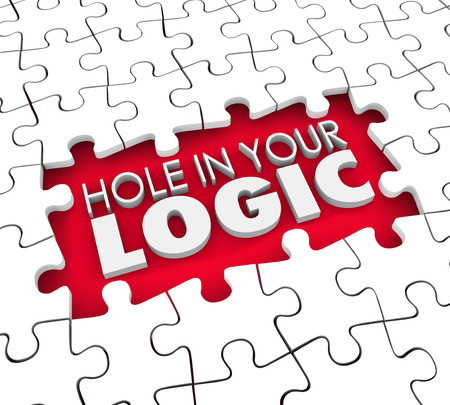“Two precedential Federal Circuit cases, from vastly different arts…illustrate what can happen when a broadly construed claim term collides with a narrower term. Spoiler alert: it is not a pretty picture.”
Disclosure: The author represented one of the appellants in Pozen, Inc. v. Par Pharmaceutical, Inc. and the defendant in Helsinn Healthcare S.A. v. Dr. Reddy’s Labs., Ltd.
 For decades, patent litigators have followed what can best be described as a forced march seeking to construe patent terms and thereafter litigate infringement and/or validity issues based on those constructions. We all know the drill: exchange contentions; flag contested claim terms; brief their constructions; apply the facts to the court’s constructions; and grind out infringement and validity evidence like so much sausage.
For decades, patent litigators have followed what can best be described as a forced march seeking to construe patent terms and thereafter litigate infringement and/or validity issues based on those constructions. We all know the drill: exchange contentions; flag contested claim terms; brief their constructions; apply the facts to the court’s constructions; and grind out infringement and validity evidence like so much sausage.
Rarely do litigants ask courts to take a step back and construe an asserted claim “as a whole,” and rarely do courts do so if they have not been asked. But sometimes the lack of a holistic claim analysis can lead to a shock to the system at trial, at which time one narrowly construed term can steamroller another broader construed term. The result can be the loss of an infringement claim or an invalidity defense. Such losses may or may not be avoidable, but facing the music earlier can save everyone a great deal of time and resources.
How We Construe Terms, Not Claims
More than a quarter century after Markman, the routine is painfully familiar to all who litigate patent cases. In many federal courts, the procedures are encrusted in special rules for patent cases. They vary from court to court, and from judge to judge, but the idea is always pretty much the same. Exchange infringement and invalidity contentions to flag the claim terms about which the parties have differing interpretations. Try to agree on the meaning, but if you can’t, put it on a schedule of terms that require construction with four columns: claim term; plaintiff’s construction; defendant’s construction; and court’s construction. Brief each contested term and perhaps attend an oral hearing. At the end, the fourth column has been completed, and so is the claim construction process.
Or is it?
Few things get litigators’ attention more effectively than a trial date. All those exhibits; all those expert reports; all those deposition transcripts; voluminous pretrial orders; all of which must come together—now or never. And all of those constructions of individual claim terms, like pieces of a jigsaw puzzle, have to fit together and tell a consistent story to carry the day for our clients on the issues of infringement and invalidity.
But occasionally, the pieces don’t fit. Even worse, they may conflict with each other. And, sooner or later, someone is likely to ask, why didn’t anyone think about construing the claims as a whole?
Why, indeed.
If you are about to embark on claim construction in a new case, today is the best time to start thinking about construing claims (or at least limitations) “as a whole,” when positions have not yet been fully staked out and your flexibility is at its zenith. If you are already embroiled in claim construction, take time today to test drive your positions and see if any of them are on a collision course. And even if you are just weeks away from trial, you may still be able to adjust your positions, perhaps in a pretrial order, before jurors are seated and witnesses are called.
Two precedential Federal Circuit cases, from vastly different arts, one involving infringement and one involving invalidity, illustrate what can happen when a broadly construed claim term collides with a narrower term. Spoiler alert: it is not a pretty picture.
Power Mosfet: Narrow Term Overpowers Broad Term
Power Mosfet Techs., LLC v. Siemens AG, 378 F. 3d 1396 (Fed. Cir. 2004), involved a patent on a semiconductor power device. A representative claim included this limitation with two terms that were separately construed: “the first contact layer contacting all said first semiconductor regions and said second semiconductor regions to form a first interface….”
A Special Master was appointed to construe the contested terms. In construing “contacting,” he concluded that the contact could be either physical or electrical. He construed “interface” to mean “the common boundary between two regions or layers in the device,” which was “necessarily physical” in the context of the patent-in-suit.
Following a bench trial, the District Court found no infringement. Finding that the requisite physical contact for an “interface” was absent, the District Court concluded:
“The physical touching requirement of ‘interface’ as construed by the Special Master, therefore, overrode the less demanding ‘physical or electrical’ requirement of ‘contacting,’ imposing a requirement of physical contact when combined.”
Id. at 1404.
The Federal Circuit agreed. It observed that “because he did not attempt to construe the claims as a whole, the Special Master had no opportunity to reconcile the functional definition he adopted for ‘contacting’ with his structural interpretation of ‘interface.’” Id. at 1409. The Federal Circuit concluded:
“While the ‘contacting’ requirement may be satisfied with either physical or electrical contact, we do not see how electrical contact alone can form the ‘necessarily physical’ junction required for the interface.”
Id. The court thus affirmed the judgment of noninfringement as well as the District Court’s denial of the plaintiff’s motion for a new trial, in which the patentee sought to pursue infringement under the doctrine of equivalents (DOE). Id. at 1410-14.
Pozen: A Hard Pill to Swallow?
A similar situation led to a similar result in Pozen, Inc. v. Par Pharmaceutical, Inc. 696 F. 3d 1151 (Fed. Cir. 2012). The patents at issue covered a Food and Drug Administration (FDA)-approved medication combining two drugs in a single tablet. The claim called for “unit doses” comprising a widely accepted 5-HT receptor agonist (viz., sumatriptan) and a nonsteroidal anti-inflammatory drug (NSAID) (viz., naproxen) that achieved specific effectiveness upon “concomitant” administration.
The District Court construed “concomitant” administration as meaning simultaneous administration or given in close temporal proximity as to allow their individual therapeutical effects to overlap. The parties agreed that “unit dose” meant a single drug administration entity.
In rejecting the defendants’ obviousness defense, the Federal Circuit again invoked consideration of the claim “as a whole”:
“When considering the claim language as a whole the term ‘unit dose’ necessarily limits concomitant administration because a single drug administration entity cannot be administered in any other fashion.”
Id. at 1161. Thus, the District Court was held to have properly limited its analysis to whether the prior art taught simultaneous administration of sumatriptan and naproxen. The District Court’s rejection of the obviousness defense was affirmed.
Construe Claims As a Whole Sooner Rather Than Later
Local patent rules may or may not contemplate construing claims as a whole, or even pairs of claim terms as in Power Mosfet and Pozen. But litigants who identify a need to do so can certainly ask the court to entertain such discussions, or perhaps work such arguments into Markman briefing. For example, in Power Mosfet, in briefing the “interface” limitation during claim construction, the patentee might have urged a broader construction for interface to make it compatible with “contacting.”
To be sure, litigants can seek construction of claim limitations which include two or more terms that might be in tension with one another. Thus, the parties in Power Mosfet might have requested construction “as a whole” of the entire limitation “the first contact layer contacting all said first semiconductor regions and said second semiconductor regions to form a first interface….” We know in hindsight that the court likely would have rejected the patentee’s argument at the Markman stage, in which case literal infringement might have been off the table. But there might have been time to mount a doctrine of equivalents position when the trial was still off in the future. Instead, the patentee was relegated to moving for a new trial and (unsuccessfully) appealing the denial of that motion.
Even if DOE infringement was not a viable approach, briefing the construction of the claim (or the limitation) as a whole during Markman, and losing the argument, could have achieved huge economies. It is now a common and accepted practice for patentees who “lose” at Markman to concede noninfringement and appeal the construction to the Federal Circuit. The prohibitive expense of a trial might be avoided.
The dynamic is a bit different in a case like Pozen, where a broader overall construction is sought to facilitate a prior art defense. Conceding that a prior art defense cannot prevail in the face of a narrow construction will not normally create an appealable posture. Still, if, say, an early “as a whole” construction rules out anticipation, a defendant might focus more time and resources on obviousness, or other defenses that are not impacted by the narrow construction. Alternatively, in an appropriate case, an early narrow “as a whole” construction might open a pathway to a noninfringing workaround.
Helsinn Healthcare S.A. v. Dr. Reddy’s Labs., Ltd., No. 12-2867, 2017 WL 631899 (D. N. J. Feb. 14, 2017), illustrates the risks of waiting too long before analyzing claim constructions as a whole. There, the defendant presented “as a whole” arguments after a trial as part of the “second step” in an infringement analysis (i.e., following the first step of claim construction). The court rejected the argument, in part, based on the view that the claim terms had not been construed in a vacuum, and because the court saw no “irreconcilable tension” between construed terms. Id. at *9. But the court also asserted that the proposed second step “would essentially unravel our careful construction” of one of the terms and “might practically eviscerate” the construction of the other term. Id.
In short, it is never too early to consider the construction of a claim as a whole. But it most assuredly can be too late to do so.
Image Source 123rf.com
Image ID : 41726037
Copyright : iqoncept

![[IPWatchdog Logo]](https://ipwatchdog.com/wp-content/themes/IPWatchdog%20-%202023/assets/images/temp/logo-small@2x.png)

![[Advertisement]](https://ipwatchdog.com/wp-content/uploads/2024/04/UnitedLex-May-2-2024-sidebar-700x500-1.jpg)
![[Advertisement]](https://ipwatchdog.com/wp-content/uploads/2024/04/Artificial-Intelligence-2024-REPLAY-sidebar-700x500-corrected.jpg)
![[Advertisement]](https://ipwatchdog.com/wp-content/uploads/2024/04/Patent-Litigation-Masters-2024-sidebar-700x500-1.jpg)

![[Advertisement]](https://ipwatchdog.com/wp-content/uploads/2021/12/WEBINAR-336-x-280-px.png)
![[Advertisement]](https://ipwatchdog.com/wp-content/uploads/2021/12/2021-Patent-Practice-on-Demand-recorded-Feb-2021-336-x-280.jpg)
![[Advertisement]](https://ipwatchdog.com/wp-content/uploads/2021/12/Ad-4-The-Invent-Patent-System™.png)






Join the Discussion
2 comments so far. Add my comment.
Anon
February 6, 2024 08:30 amYour reliance on SCOTUS is (sadly) misplaced, Pro Say.
We’ve been over this enough times.
Pro Say
February 5, 2024 01:22 pmGreat advice.
If only the CAFC would follow the claim as a whole in their eligibility analysis.
You know; just as SCOTUS has instructed.
Add Comment